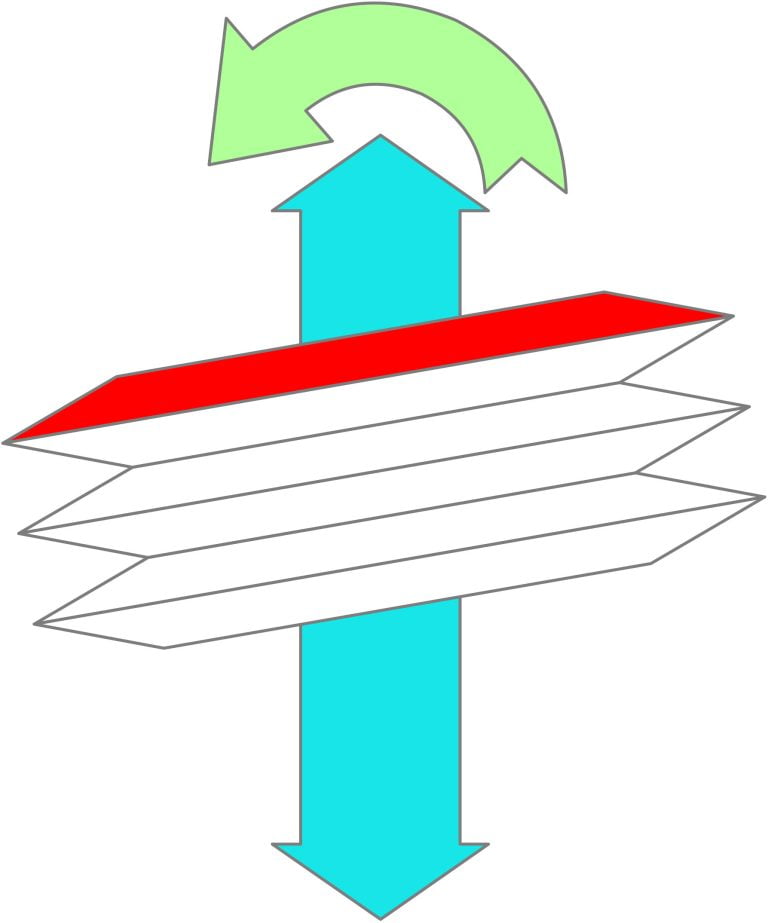
A screw converts rotary motion into linear motion and a torsional force to a linear one. In terms of the other simple machines you can view it as a shallow "inclined-plane" wrapped around a cylinder.
Mechanical advantage is gained by altering the pitch, expressed as an axial distance for one full rotation e.g 1.25mm. Making the threads shallower and closer together makes the plane longer, increasing mechanical advantage. This means a long rotational distance with a small rotational force induces a short axial movement with a large axial force, balancing the same Work = Force x Distance equation as the "inclined-plane".
Commonplace examples are numerous: nuts, bolts, screw jacks, cider presses, vices, wood screws, corkscrews.
Screws are a central topic for this website. Once seized they can be exceptionally difficult to move, depending on how much of the thread has been contaminated with corrosion. The contamination of the thread means a potentially large surface area has been exposed to something which has the same effect as an adhesive.